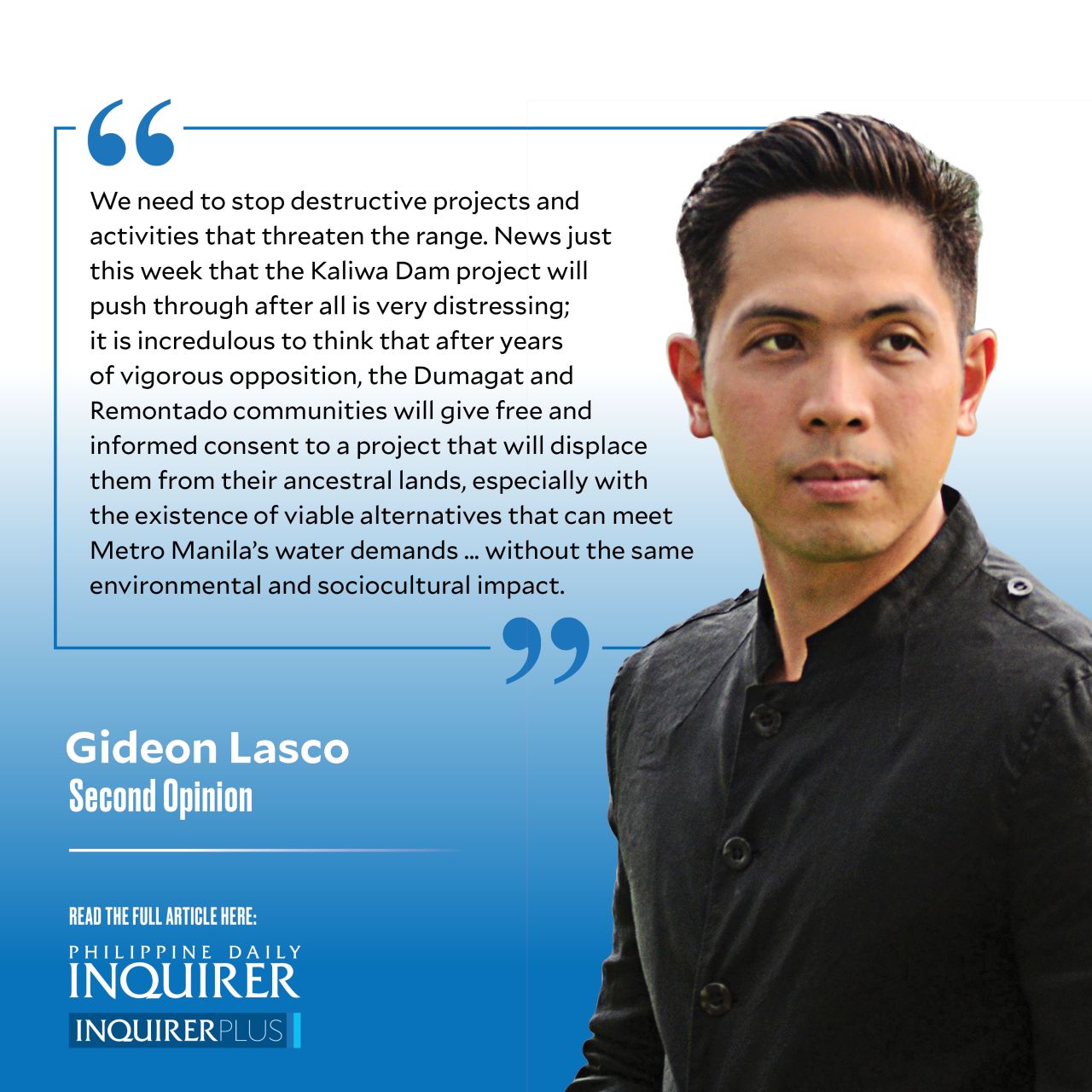Save Sierra Madre, stop Kaliwa Dam

Los Baños, Laguna—The Sierra Madre mountain range is one of the most impressive geographic features in our archipelago, spanning over 500 kilometers and 10 provinces, encompassing over 60 protected areas, and hosting a wide range of endemic flora and fauna, from pitcher plants like Nepenthes barcelonae, to rare birds like the Philippine eagle-owl (Bubo philippensis).
As a mountaineer, I have had the privilege of doing various hikes in the Sierra Madre, including the 1,940-meter Mt. Bintuod in Nueva Vizcaya (possibly the highest peak in the range), the 1,887-meter Mt. Mingan in Aurora (we had to brave thorny pandan slopes to reach its peak), the 1,168-meter Cagua Volcano in Cagayan (where I very nearly fell on a boiling fumarole), the 1,750-meter Mt. Kemalugong in Nueva Ecija (with its unexpected pine forest), and the 1,448-meter Mt. Irid in Rizal (with its incredible limestone formations). All these hikes taught me the beauty of the range and its significance—cultural, environmental, economic—to the local communities and the country itself.
Article continues after this advertisementThankfully, the role of the Sierra Madre has been increasingly recognized in recent years, particularly in shielding the rest of Luzon from typhoons. In 2012, then President P-Noy proclaimed Sept. 26—the day Typhoon “Ondoy” made landfall three years prior—as “Save Sierra Madre Day.” Coincidentally, the same day this year marked the arrival of Typhoon “Karding,” serving as yet another compelling reminder of the mountain range’s protective role.
The Sierra Madre, indeed, has been protecting us for centuries, not just from typhoons but from ecological disasters—which is probably why, in Ilocano and other Filipino languages, “bantay” means mountain. The question is: What are doing to protect the range?
This vast and majestic range is just as needful of protection as ourselves, if not more so. For centuries, the Sierra Madre has been subjected to destruction in human hands. The Marcos dictatorship was particularly disastrous for the range: Hundreds of thousands of hectares of forest land were given to cronies as “concessions” as part of what Robin Broad (1995) calls “plunder economy.” Even today, illegal logging continues in the range; there were times when, even as I was trekking through the forest, I could hear the sound of chainsaws destroying it tree by tree.
Article continues after this advertisementThis brings me to our most urgent task: We need to stop destructive projects and activities that threaten the range. News just this week that the Kaliwa Dam project will push through after all is very distressing; it is incredulous to think that after years of vigorous opposition, the Dumagat and Remontado communities will give free and informed consent to a project that will displace them from their ancestral lands, especially with the existence of viable alternatives that can meet Metro Manila’s water demands (a concern I do not dismiss) without the same environmental and sociocultural impact. Aside from this megaproject, logging, land-grabbing, quarrying, and mining are also leading to deforestation, and must likewise be arrested alongside the culture of corruption that enables them.
We also need to defend the environmental defenders—including forest rangers, environmental activists, and indigenous peoples who speak out against these destructive projects—and carry out vital environmental work. Alas, as the latest Global Witness report shows, the Philippines continues to rank among the deadliest countries for environmental defenders—19 in 2021 alone—and justice has been painfully slow, if not nonexistent.
Meanwhile, we should support the scientists and researchers whose works—just like the great Leonard Co before them—bring us to a fuller appreciation of the beauty, (bio)diversity, and vulnerability of the range.
Finally, we need to make the mountain range accessible. Expensive registration and guide fees, as well as limited public transport, have restricted access to even the parts of the range closest to Metro Manila—in sad contrast to many countries where people can go outdoors for free. In the aftermath of a pandemic that drove us (needlessly) indoors, the Sierra Madre—and other green spaces in the country—can uplift our physical and mental health while fostering an appreciation of our interconnectedness with nature. Parks like Masungi Georeserve have fulfilled this role, but they need to be protected, promoted, and propagated.
All of the above will require a recognition that the Sierra Madre can keep protecting us if and only if we protect it, too. We can keep saying “thank you” to the Sierra Madre range whenever it saves us from typhoons and floods, but the only way to truly and meaningfully express our gratitude is to protect it from destructive projects like Kaliwa Dam.
—————-
glasco@inquirer.com.ph
















